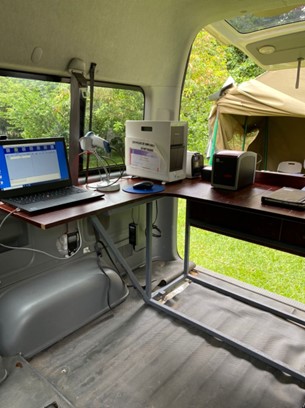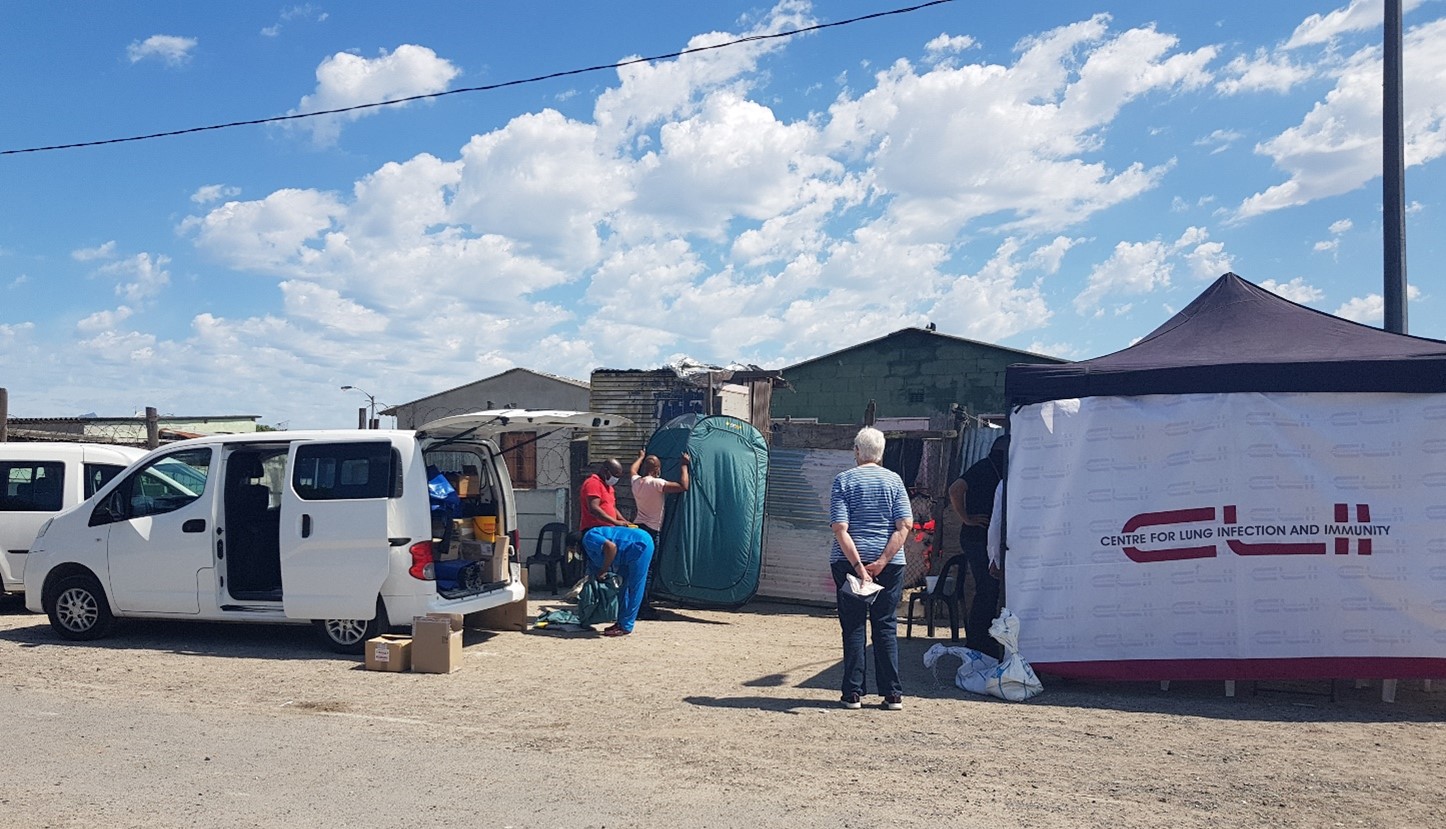A comparative study between two diagnostic interventions uncovers an improved active case finding strategy for TB
 Cape Town and London | A study funded by the US National Institutes of Health and the South African Medical Research Council has found that a low-cost scalable (easy to replicate and start up) mobile mini-clinic, operated by 2 health care workers, and containing newer portable battery-operated DNA-based diagnostics (Gene Xpert Edge), was feasible and effective for community-based active case finding of tuberculosis in under-resourced TB endemic settings.
Cape Town and London | A study funded by the US National Institutes of Health and the South African Medical Research Council has found that a low-cost scalable (easy to replicate and start up) mobile mini-clinic, operated by 2 health care workers, and containing newer portable battery-operated DNA-based diagnostics (Gene Xpert Edge), was feasible and effective for community-based active case finding of tuberculosis in under-resourced TB endemic settings.
The study called the XACT 2, was performed in the districts of Mitchells Plain and Klipfontein in Cape Town, South Africa. These areas have a high burden of informal housing and many families that are living below the poverty line. However, the setting is highly representative of many peri-urban shanty towns and ‘slums’ in Asia, Africa and South America where there is a high burden of undiagnosed TB. The study used a randomised control trial design where participants in the community were randomly allocated to receiving the newer portable package versus one using a more traditional and older diagnostic methodology called smear-microscopy (looking for bugs under a microscope at a local community health centre).
Study findings
The study found that the time to treatment initiation was substantially more rapid with the DNA-based diagnostic than with the more traditional smear microscopy. Xpert was associated with a shorter median time to treatment initiation of only 7 days versus over 3 weeks with the more traditional method. Although newer DNA-based diagnostics are now recommended by WHO for routine TB diagnosis in TB endemic countries, the ground reality is that smear microscopy often remains the standard of care in such settings, with expensive and advanced DNA-based diagnostics being reserved for more difficult to diagnose cases. Moreover, the available evidence on the utility of DNA-based diagnostic tests for community-based active case finding is limited. However, the use of symptom screening with smear microscopy is still endorsed in this context, in under-resourced settings.
Professor Keertan Dheda, Principal Investigator (PI) of the study from the University of Cape Town (UCT) and the London School of Hygiene and Tropical Medicine, outlined the importance of the study:
“Evidence around the optimum strategy to find TB patients in the community remain sparse and controversial, and so this study fills an important gap,” says Prof. Dheda.
The current global public health strategy for TB is one that incorporates passive case finding, i.e. the patient self-presents to healthcare facilities when symptomatic. The drawback of this approach is considerable as TB transmission occurs prior to diagnosis.
Prof Dheda said, “The XACT model used ‘active case finding’, which refers to moving diagnostics out of healthcare facilities and into the community to ‘actively’ find patients needing treatment.”
TB remains the foremost infectious disease killer in sub-Saharan Africa, surpassing COVID-related deaths. In many TB endemic countries, it sets back national GDP by between 2% to 3%. Thus, TB remains a major public health priority globally, with 11 million people falling newly ill with TB annually, and in 2022 there were 1.5 million associated deaths. A startling statistic is that 4 million people with TB (2 in every 5 cases) remain undetected or undiagnosed. Such patients predominantly reside in peri-urban informal settlements and shanty towns in TB endemic countries. This problem has worsened after COVID-19 making the implementation of active case finding even more important. However, TB, including the drug-resistant form, whilst a major problem in lower middle-income countries (LMICs), is now also a problem in some parts of Europe. TB rates are rising within certain communities and populations within European cities including in homeless shelters. Thus, the active case finding paradigm would also apply in these contexts.

Interestingly, the study found that the new DNA-based diagnostic tests only picked up about 50% of the case burden of TB in the community when compared to sputum culture. A sputum culture refers to a test that checks for bacteria that may be causing infection in the airways or lungs, but this process is expensive, takes longer (several weeks), and is not routinely used in most parts of the world.
Despite this, the punchline was that the DNA-based diagnostic (Xpert Edge) picked up almost all the probably infectious cases, often called ‘super spreaders’, which are associated with disease transmission and amplification of the epidemic. The easy to replicate and scalable approach promises to reduce amplification of the TB epidemic by early diagnosis and rapid treatment initiation of the most infectious cases.
It is traditionally thought that smear microscopy identifies patients likely to be highly infectious but the study used more innovative tools, including cough aerosol sampling, which quantifies the number of infectious and viable bugs in respirable particles that penetrate deeply into the lung, to identify the most infectious patients.
Rapid treatment initiation remains the most effective way of rendering patients non-infectious. Thus, the XACT case finding strategy could be linked to new advances in TB treatment characterised by shortening of treatment regimens for both drug-sensitive and resistant TB, said Dheda.
For more enquiries:
- Prof Keertan Dheda
Principal Investigator: University of Cape Town
Email: keertan.dheda@uct.ac.za / keertan.dheda@lshtm.ac.uk - Ms Yolanda Phakela
SAMRC: Public Relations Manager
Email: Yolanda.Phakela@mrc.ac.za
Cell: +27 73 801 3691
